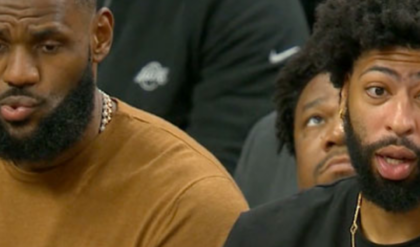A report in People magazine says King Charles no longer picks up Prince Harry’s phone calls, here our royal experts explain why.
Robert Jobson tells Palace Confidential that the King has ‘too much on his plate’ to deal with Harry’s ‘constant demands’ and asks ‘who would want to take the calls if the conversation just ends in a slanging match about money and legal fees?’
The Daily Mail’s Richard Eden meanwhile thinks that Charles is being cautious after previous phone calls have ended up with news outlets receiving a ‘full briefing’ after the call.

Robert also tells us about his new book Catherine, The Princess of Wales, the stories he learnt about the princess along the way and why he thinks that despite some reports to the contrary, there is ‘no way back’ for Catherine and Meghan, nor Prince William and Prince Harry.
Prince Harry and Meghan Markle’s recent activities, including their trip to Colombia, have sparked renewed debate about their relevance and intentions.
Their visit, focusing on women’s leadership and digital issues, has raised questions about the purpose and funding of the trip, especially given Colombia’s financial constraints. This event, while prestigious, has drawn significant media attention, prompting discussions about its impact and implications.
At the same time, internal tensions within the royal family are becoming increasingly apparent. King Charles III’s decision to withdraw financial support for Prince Andrew’s security has highlighted shifting royal dynamics. Andrew’s resistance to leaving his residence, Royal Lodge, underscores ongoing family conflicts. The situation has led to speculation about the future of the property and the king’s motives, adding another layer to the complex family relationships.
Prince Andrew’s potential eviction from Royal Lodge reveals the intricacies of the royal family’s internal disputes. The king’s desire to remove Andrew appears to be driven by financial concerns, despite Andrew fulfilling all lease obligations. This standoff illustrates the delicate balance of managing royal affairs through officials rather than direct confrontation, complicating communication and resolution.

Meanwhile, discussions about Prince Harry’s beard, which had previously sparked controversy during his military service, now reflect broader changes in military grooming standards. The recent relaxation of regulations allowing officers to wear beards highlights evolving norms and public acceptance of personal choice within the armed forces.
The departure of Prince Harry’s Chief of Staff, Josh Kettler, after only three months has further highlighted the challenges faced by Team Sussex. High staff turnover and criticism of their recent Colombian visit, perceived by locals as a vanity project, suggest difficulties in maintaining a stable and effective operation. These issues reflect a broader struggle for Harry and Meghan to adapt to life outside the royal family and maintain public relevance.
Their visit to Colombia, marked by limited media access and controlled narrative, has been scrutinized for lacking a clear objective. The decision to allow only one digital journalist to cover the trip and Harry’s apparent diminished role during events have raised questions about the couple’s media strategy and their shifting dynamic. These elements underscore a significant departure from traditional royal practices and highlight the couple’s attempts to manage their public image.
In light of recent trips by the royal family, there is growing interest in their significance and timing. The strategic nature of these trips, often coinciding with periods of fewer engagements, reflects a calculated approach to maximize visibility and public impact. Upcoming royal visits, such as the anticipated trip to India, are expected to continue drawing media attention and public interest, offering opportunities for cultural exchange and diplomatic relations.
Overall, the current dynamics within the royal family and the Sussexes’ public activities illustrate ongoing challenges and shifting narratives. These developments highlight the complexities of royal relationships and the evolving nature of public perception in the modern era.





